
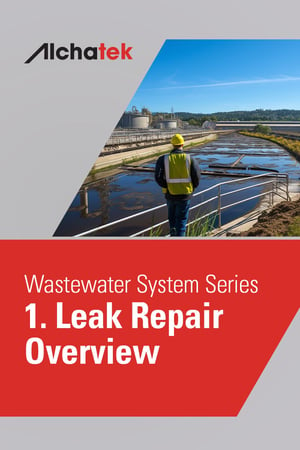 Wastewater management is an essential component of municipal operations, pivotal for public health and environmental protection. The intricate network of sewers, manholes, and lift stations must always function optimally. Ensuring the integrity of this infrastructure is not just about maintenance; it’s about safeguarding the community's well-being.
Wastewater management is an essential component of municipal operations, pivotal for public health and environmental protection. The intricate network of sewers, manholes, and lift stations must always function optimally. Ensuring the integrity of this infrastructure is not just about maintenance; it’s about safeguarding the community's well-being.
The Persistent Challenge of Inflow and Infiltration
Inflow and infiltration (I&I) occur when groundwater and stormwater seep into sewer systems through cracks, faulty joints, and compromised structures. I&I can lead to increased treatment costs, environmental contamination, and even structural damage. For municipal managers, it's a silent adversary that threatens efficiency and inflates operational budgets.
The True Cost of Leaks
Leaks within the wastewater system are more than just a nuisance; they represent a critical loss of resources and a potential health hazard. Unaddressed leaks can escalate into more significant issues, including sinkholes, road damage, and the deterioration of the sewer infrastructure itself. The cost of inaction is often much greater than the cost of repair, making timely intervention essential.
Traditional Leak Repair Methods
Historically, municipalities have employed a variety of methods to combat leaks, from cementitious grouts to physical replacement of the infrastructure. These solutions, while sometimes effective, come with their own set of drawbacks—long downtimes, invasive procedures, and often, temporary fixes that do not stand the test of time or pressure.
Polyurethane Grout
With its quick-setting properties, formidable bond strength, and flexibility, polyurethane grout seals leaks efficiently and effectively. Unlike traditional methods, it offers a permanent solution that adapts to the movements within the earth, maintaining a seal even under fluctuating conditions.
Series Overview
The Wastewater System Series will examine the multifaceted benefits of polyurethane grout for wastewater infrastructure repair. Future posts will explore the material's advantages, its application in various structures, and the economic rationale behind its use. By the series' conclusion, municipal managers will have a comprehensive understanding of how polyurethane leak repair grout is used in maintaining the health and efficiency of their wastewater systems.
Key Takeaways
- Wastewater infrastructure integrity is vital for municipal operations and public health.
- Inflow and infiltration present persistent challenges, leading to increased operational costs and potential environmental issues.
- Traditional leak repair methods often fall short of providing long-lasting, cost-effective solutions.
- Polyurethane grout offers a durable, efficient, and adaptable solution for leak repair.




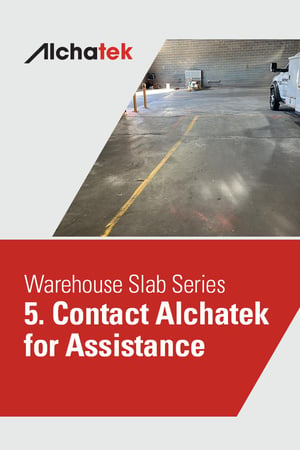 In the world of warehouse and distribution center management, the condition of your concrete slabs is not a minor detail—it's a critical component that impacts safety, equipment longevity, and operational efficiency.
In the world of warehouse and distribution center management, the condition of your concrete slabs is not a minor detail—it's a critical component that impacts safety, equipment longevity, and operational efficiency.

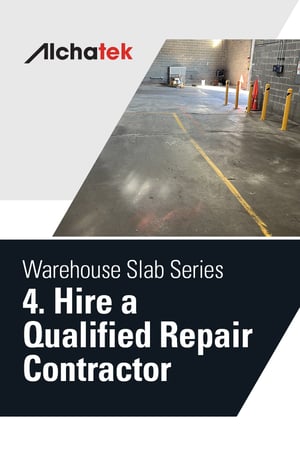 Choosing the right contractor for slab stabilization and leveling work in a warehouse or distribution center is a decision that carries significant weight. The quality of the repair work not only affects the immediate operational efficiency but also has long-term implications for safety, equipment longevity, and overall maintenance costs. A poor choice can lead to subpar work, requiring additional repairs and causing more operational disruptions. On the other hand, a skilled contractor can efficiently resolve floor issues, minimizing downtime and maximizing the lifespan of the repair.
Choosing the right contractor for slab stabilization and leveling work in a warehouse or distribution center is a decision that carries significant weight. The quality of the repair work not only affects the immediate operational efficiency but also has long-term implications for safety, equipment longevity, and overall maintenance costs. A poor choice can lead to subpar work, requiring additional repairs and causing more operational disruptions. On the other hand, a skilled contractor can efficiently resolve floor issues, minimizing downtime and maximizing the lifespan of the repair.
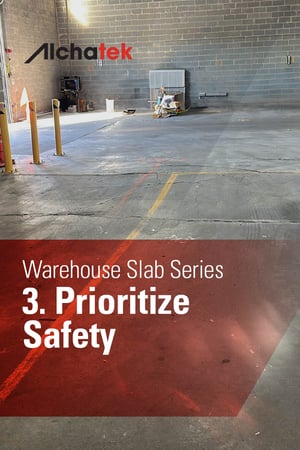 In the fast-paced environment of a warehouse or distribution center, safety is a paramount concern. One often overlooked factor that can significantly impact safety is the condition of the floor. Uneven or unstable floors can create hazards that put employees at risk. Tripping, slipping, and falling are just a few of the accidents that can occur when floors are in poor condition. Additionally, material-handling equipment like forklifts can tip over or lose control, leading to more severe accidents or even fatalities.
In the fast-paced environment of a warehouse or distribution center, safety is a paramount concern. One often overlooked factor that can significantly impact safety is the condition of the floor. Uneven or unstable floors can create hazards that put employees at risk. Tripping, slipping, and falling are just a few of the accidents that can occur when floors are in poor condition. Additionally, material-handling equipment like forklifts can tip over or lose control, leading to more severe accidents or even fatalities.
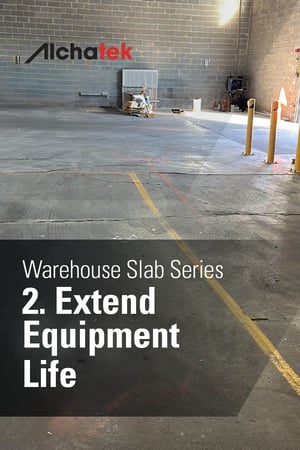 In a warehouse or distribution center, the condition of the floor can have a direct impact on the lifespan of material-handling equipment like forklifts, pallet jacks, and conveyors. Uneven or unstable floors can cause excessive wear and tear on these machines, leading to frequent breakdowns and increased maintenance costs. Over time, this can significantly reduce the lifespan of expensive equipment, necessitating premature replacements and adding to operational costs.
In a warehouse or distribution center, the condition of the floor can have a direct impact on the lifespan of material-handling equipment like forklifts, pallet jacks, and conveyors. Uneven or unstable floors can cause excessive wear and tear on these machines, leading to frequent breakdowns and increased maintenance costs. Over time, this can significantly reduce the lifespan of expensive equipment, necessitating premature replacements and adding to operational costs.
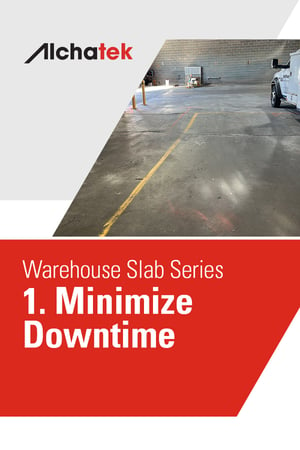 Operational downtime in a warehouse setting has far-reaching consequences that go beyond the immediate financial losses. When a warehouse floor requires repair, the disruption to the supply chain can be significant. Suppliers and customers alike feel the impact of delays, and the ripple effect can damage relationships and erode trust. Additionally, downtime affects employee productivity and morale, leading to a potential decrease in work quality and an increase in turnover rates. In a just-in-time supply chain, even a brief period of downtime can result in stockouts at retail locations, leading to lost sales and damaged customer relationships.
Operational downtime in a warehouse setting has far-reaching consequences that go beyond the immediate financial losses. When a warehouse floor requires repair, the disruption to the supply chain can be significant. Suppliers and customers alike feel the impact of delays, and the ripple effect can damage relationships and erode trust. Additionally, downtime affects employee productivity and morale, leading to a potential decrease in work quality and an increase in turnover rates. In a just-in-time supply chain, even a brief period of downtime can result in stockouts at retail locations, leading to lost sales and damaged customer relationships.
 Kyle, a seasoned sales leader, boasts a rich tapestry of diverse sales experience spanning various industries. His journey into the realm of leadership began with a distinguished tenure in the US Army and US Marine Corps, where he honed his skills in strategic thinking, discipline, and effective communication. The military background instilled in him a profound sense of commitment and a relentless pursuit of excellence, qualities that seamlessly translated into his subsequent career in professional sales. Kyle’s cross-industry expertise has not only broadened his perspective but has also equipped him with a unique skill set that enables him to identify innovative solutions and tailor his approach to meet the specific needs of a diverse clientele.
Kyle, a seasoned sales leader, boasts a rich tapestry of diverse sales experience spanning various industries. His journey into the realm of leadership began with a distinguished tenure in the US Army and US Marine Corps, where he honed his skills in strategic thinking, discipline, and effective communication. The military background instilled in him a profound sense of commitment and a relentless pursuit of excellence, qualities that seamlessly translated into his subsequent career in professional sales. Kyle’s cross-industry expertise has not only broadened his perspective but has also equipped him with a unique skill set that enables him to identify innovative solutions and tailor his approach to meet the specific needs of a diverse clientele.


 Paul is a dynamic and results-driven executive with extensive international management, marketing, business development, strategic planning, market expansion success, and consultation experience across the United States and Latin America.
Paul is a dynamic and results-driven executive with extensive international management, marketing, business development, strategic planning, market expansion success, and consultation experience across the United States and Latin America.
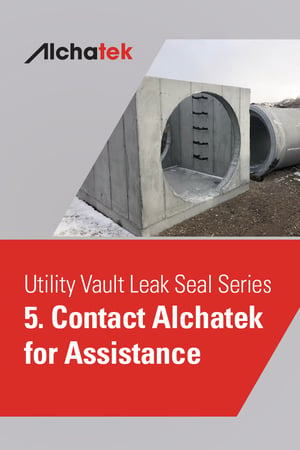 The importance of properly sealing leaks in utility vaults cannot be overstated. Utilizing the right materials and following best practices are fundamental. However, the process doesn't stop there; selecting the right contractor is a crucial decision that directly impacts the quality and longevity of your repair.
The importance of properly sealing leaks in utility vaults cannot be overstated. Utilizing the right materials and following best practices are fundamental. However, the process doesn't stop there; selecting the right contractor is a crucial decision that directly impacts the quality and longevity of your repair.
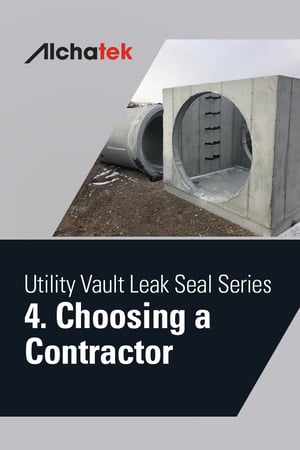 The quality of workmanship directly impacts the effectiveness and longevity of the repair, making it imperative to choose a contractor wisely.
The quality of workmanship directly impacts the effectiveness and longevity of the repair, making it imperative to choose a contractor wisely.